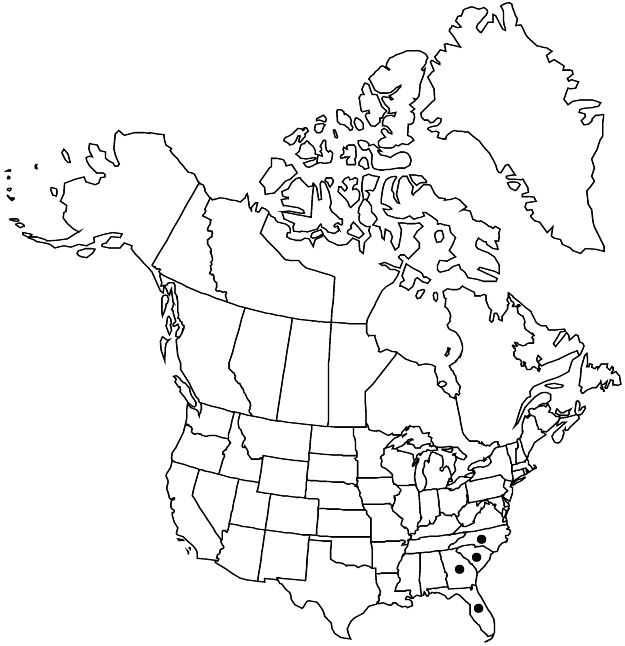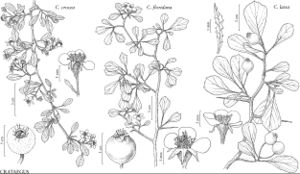Difference between revisions of "Crataegus floridana"
Bot. Gaz. 33: 124. 1902.
FNA>Volume Importer |
imported>Volume Importer |
||
| (2 intermediate revisions by 2 users not shown) | |||
| Line 66: | Line 66: | ||
|publication year=1902 | |publication year=1902 | ||
|special status=Endemic;Illustrated | |special status=Endemic;Illustrated | ||
| − | |source xml=https:// | + | |source xml=https://bitbucket.org/aafc-mbb/fna-data-curation/src/2e0870ddd59836b60bcf96646a41e87ea5a5943a/coarse_grained_fna_xml/V9/V9_1070.xml |
|subfamily=Rosaceae subfam. Amygdaloideae | |subfamily=Rosaceae subfam. Amygdaloideae | ||
|tribe=Rosaceae tribe Gillenieae | |tribe=Rosaceae tribe Gillenieae | ||
Latest revision as of 22:53, 5 November 2020
Shrubs, 60 dm, branches strongly weeping (moving in slight wind). Stems: trunk bark dark brown, rimose; twigs: new growth pubescent, 1–2-years old dark purple-brown, slender; thorns on twigs ± straight, 1–2-years old dark purple-brown, fine, 2 cm. Leaves: petiole slender, length 25–50% blade, pubescent, glandularity not recorded; blade spatulate to obtrullate, (1.5–)3–4 cm, thin (readily fluttering in wind), base cuneate, lobes 1 or 2 per side, ± obscure to ± distinct, lobe apex subacute, margins entire proximally, crenate to serrate distally, strongly gland-dotted young, veins 2 or 3 per side, apex subacute to acute, surfaces ± persistently pubescent. Inflorescences 2–4-flowered; branches canescent-tomentose; bracteoles linear, margins glandular. Flowers 12–15 mm diam.; hypanthium tomentose; sepals narrowly triangular, margins ± entire, abaxially tomentose; petals 5; anthers cream; styles 3–5. Pomes orange, ellipsoid to suborbicular, 6–8 mm diam., glabrate or hairy; sepals spreading; pyrenes 3–5.
Phenology: Flowering Mar–Apr; fruiting Jul–Aug.
Habitat: Dry brush
Elevation: 0–200 m
Distribution

Fla., Ga., N.C., S.C.
Discussion
Crataegus floridana is frequent in north-central Florida and extends through much of Georgia with single records from Kershaw County, South Carolina, and Brunswick County, North Carolina.
Crataegus floridana resembles C. quaesita in its more or less obtrullate, but distally lobed leaves (which can always be observed fluttering in the wind) and longer petioles. The largest leaves in subser. Tenues may be found in Crataegus floridana; there is considerable size variation. The depth and sharpness of the lobes is variable, with a maximum in the proportionately broadest leaves, these having been called C. anisophylla. Differences from 146. C. meridiana are noted there.
Selected References
None.
